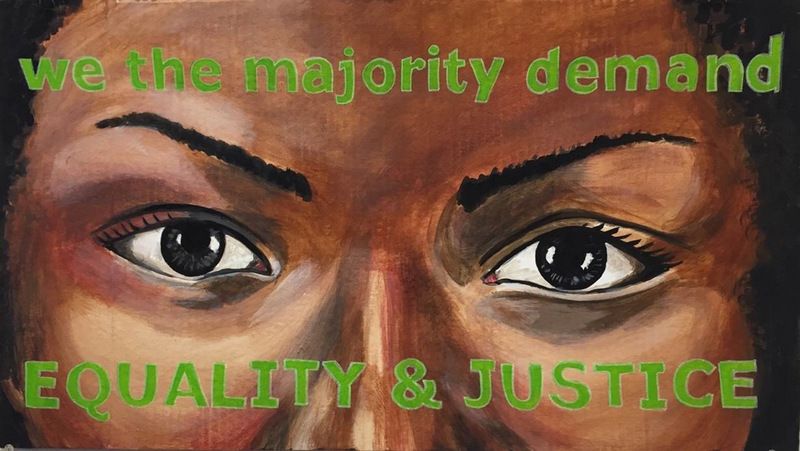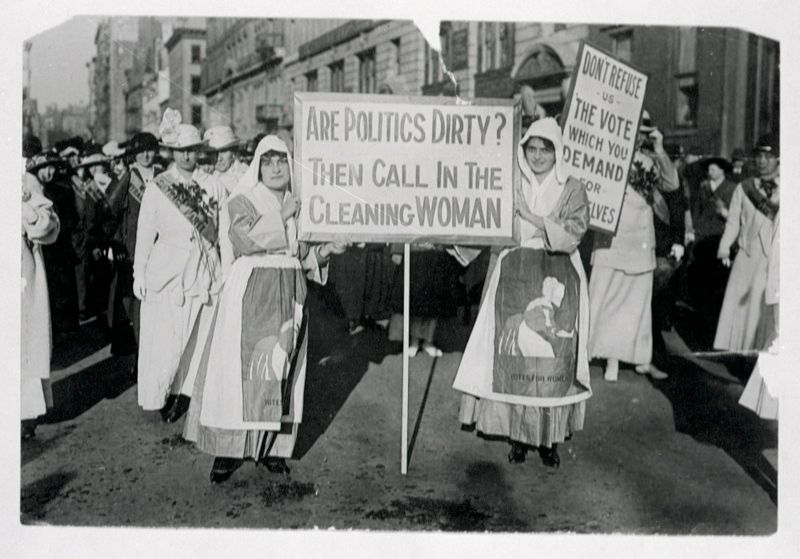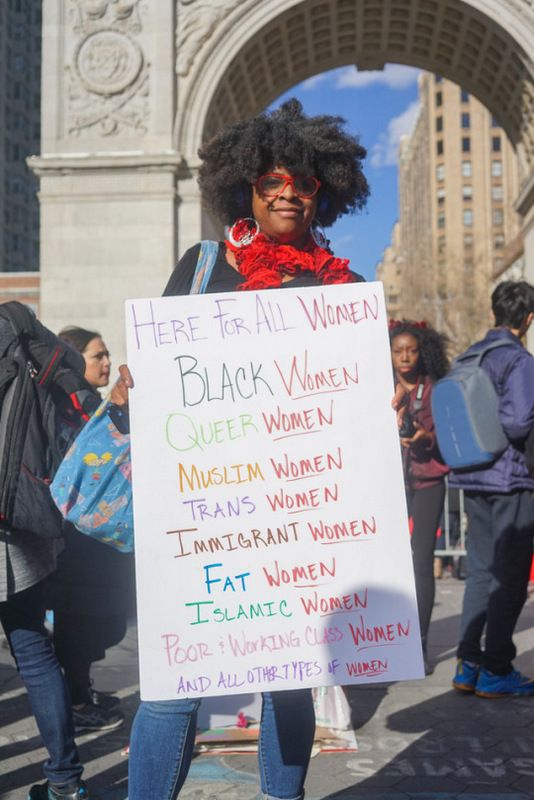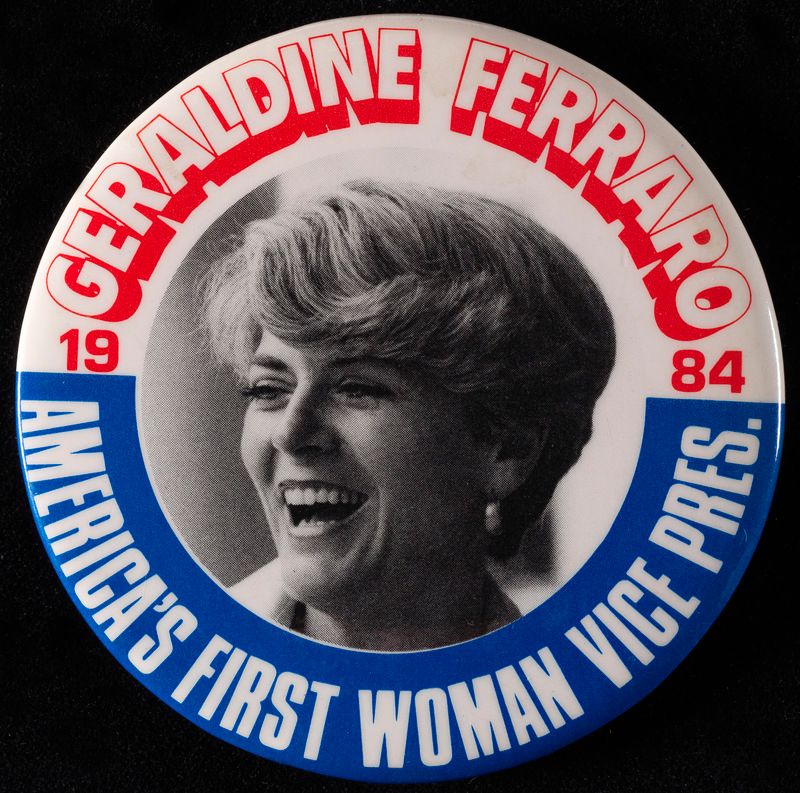Last Chance to Catch NYC's Holiday Notalgia Train
We met the voices of the NYC subway on our nostalgia ride this weekend!



2017 NYC Women’s March Poster, Museum of the City of New York, 2017.27.1B
On November 6, 2017, women will have been allowed to vote in New York for one hundred years. While so much of the political art and curation that happens in New York today is, understandably, a direct response to the immediate present, Beyond Suffrage: A Century of New York Women in Politics is an homage to the past century. The exhibition opening on October 11 at the Museum of the City of New York, examines how suffrage was won and what has been done with it since.

Gloria Steinem and Dorothy Pitman Hughes, photographed by Dan Bagan, 2014
The exhibition opens in a small entry hall with high ceilings and walls covered with images of the women’s march in January 2017 blending into images of marches from the early 20th century; as an idea, the comparison isn’t new, but the visual parallel is chilling. Whether or not it’s an accurate comparison, the tendency to see ourselves mirrored in our past is natural and the exhibit takes on the interesting project of placing today’s politics and feminism in the context of their ancestors.

Suffrage parade on Fifth Avenue, November 1, 1915, Courtesy Rose Schneiderman Collection, Tamiment Library & Robert F. Wagner Archives, New York University
Beginning with the superimpositions in the entrance and then throughout the chronological multimedia exhibit, the word beyond resonates throughout the exhibit. The room is divided into quadrants that bleed into each other. The watershed referendum flows into the relatively undiscussed years of the 1920s through the 1940s and the women behind the implementation of the New Deal; then into mid-twentieth century Women’s Liberation, and then into contemporary women in politics.

International Woman’s Day, March 2017, Photographed by Cindy Trinh, ©Cindy Trinh.
New York remains a critical character throughout the timeline, “both a training ground and a battleground” for women who were both succeeding and failing at things unprecedented in the rest of the country. New York’s win in 1917 put pressure on President Wilson to endorse women’s suffrage and Congress passed the 19th Amendment in 1919.

Geraldine Ferraro Campaign Pin, Museum of the City of New York, gift of Amy Sack, 96.24
For a chronological exhibit, the experience feels oddly non-linear; the Smithsonian Folkways album Songs of the Suffragettes playing in the background throughout all the quadrants stands out, as do the YES and NO (for women’s suffrage) campaign pins; a serene portrait of Belle Moskowitz behind Al Smith, and letters to Hillary Clinton.
Though in many ways our current political situation is unprecedented, the advantages of seeing ourselves as products of unique circumstances are limited. So the second New York woman to win a place on a major party’s national ticket, in 2016, becomes simply a continuation from the first New York woman to do the same in 1984. The slideshow of the fourteen women in elected office in New York today becomes a continuation of the display of women appointed into Mayor La Guardia’s progressive administration who became crucial during the Depression and beyond.

Women of the La Guardia administration dinner , 1937, Courtesy of the La Guardia and Wagner Archives, F. H. La Guardia Collection
“This is not an exhibition about feminism,” curator Sarah Seidman said. “This is an exhibition about women in relation to the State – both against it, and in it.” Labor, health, policy, and governance issues are the top priorities for the female characters in this show, and they display these priorities through the underlying theme of contradiction.
Throughout the show, the tension between the difference and sameness between what has been constituted as women’s rights is apparent. Either way, the importance of voting and participating in the political process, from whatever direction it may be, holds the material together.
As with so many exhibitions, it’s easy with Beyond Suffrage to accidentally start at the end, to enter the exhibition area into the last quadrant and immediately face a smart-looking pantsuit and portraits of the Women’s March organizers.
But once the whole circle has been completed, it’s also easy to imagine that in another century this pantsuit actually could be that first quadrant, grouped into a section with Susan B. Anthony and less ironic displays of the superimposed images of protests from across the decades – just the beginning of an even more complicated or urgent movement to come. Beyond Suffrage goes beyond suffrage, but it encourages us to imagine beyond ourselves, too.
The exhibition opens on Wednesday, October 11 at the Museum of the City of New York and will be on view through July 22, 2018.
Next, check out the Museum of the City of New York’s exhibition, “To Quench the Thirst of New Yorkers: The Croton Aqueduct at 175”, and see what they’re up to for Achtober.
Subscribe to our newsletter